

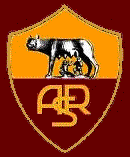
|
“Roma non è soltanto una entità geografica. Roma non è circoscritta da fiumi, monti o mari. Roma non è un fatto di razza, sangue o religione: Roma è un ideale. Roma è la più sublime personificazione della libertà e della legge mai realizzata dal genere umano da quando, diecimila anni fa, i nostri antenati sono scesi da quei monti e hanno imparato a vivere in comunità obbedendo alla legge.” Discorso di Marco Tullio Cicerone (106 a.C. – 43 a.C.) durante la campagna elettorale della Gallia Citeriore (Valle del Po). Riportato da Marco Tullio Tirone, suo segretario particolare. click here for the english version
|
Nel 1926, nel mondo calcistico capitolino, predominava il classismo più acceso. Ogni squadra romana di prima divisione possedeva qualcosa che all'altra mancava e, singolarmente, rappresentavano una piramide sociale stratificata. Incollate insieme avrebbero, però, fatto germogliare e crescere il fenomeno testaccino e radicato, nell'animo degli sportivi romani, la passione giallorossa. L'aver compreso la reale situazione calcistica di Roma e l'aver gettato le basi per un sostanziale rinnovamento sono stati i vantaggi dell'operazione condotta da Italo Foschi, organizzatore di notevole prestigio e di onestà a tutta prova. Italo Foschi ricopriva, in quel periodo, la carica di federale e, contemporaneamente, era membro del C.O.N.I. e presidente della Fortitudo Pro Roma. I vecchi borghigiani rivendicano l'apporto più sostanziale alla fondazione dell'Associazione Sportiva Roma, dato che la Fortitudo fornì alla nascente squadra capitolina 12 giocatori, di cui ben cinque avevano indossato la maglia della nazionale. Essi sostengono che la fusione, voluta dall'avv. ItaloFoschi, fu un atto d'imperio; altri che, data la situazione economica dei diversi sodalizi e l'impossibilità di gareggiare ad armi pari con le formazioni settentrionali, fu una necessità. La ragione principale è proprio quest'ultima, cioè la necessità, ma scaturita da diverse cause concomitanti: la capitale d'Italia doveva salire, nei valori calcistici nazionali, ai livelli di Torino, di Genova, di Milano, ma anche di Bologna. I grandi clubs del norditalia si erano rafforzati attraverso l'apporto di circoli cittadini, che si erano integrati o costituivano delle appendici dei granata, dei bianconeri, dei neroazzurri, dei rossoneri, dei rossoblu ecc. . Roma, questo movimento di unione non lo aveva, soprattutto perchè i diversi grappoli di tifosi non intendevano abbandonare le rivalità rionali che, nel '26, erano ancora profonde. La rivalità rionale significava anche una rivalità di classe e un distacco sociale tra gli abitanti di un rione e gli abitanti di un altro. Il movimento unitario del calcio romano cominciò molto prima della data di fondazione dell'A.S. Roma. Come punto emblematico di partenza occorre attestarsi - per meglio intendere le finalità desiderate da Italo Foschi - al 1922, anno in cui militavano nella prima divisione regionale otto squadre capitoline: la Lazie (che non era un grosso club), il Roman, la Juventus, la Fortitudo, l'Alba, l'Audace, la Pro Roma, l'U.C. Romana. In quell'anno la Fortitudo riuscì a giungere in finale nazionale con la Pro Vercelli (la squadra romana si era affermata nel girone della Lega Sud e quella piemontese nel girone della Lega Nord). La Pro Vercelli diveniva campione vincendo i due incontri che l'opponevano alla Fortitudo: per 3-0 il primo e per 5-2 il secondo. Pur non essendo discutibile il risultato, il fatto che la Fortitudo fosse giunta a una lunghezza dallo scudetto aveva provveduto a caricare l'ambiente, e si ricercavano opportunità per rendere più solide le formazioni. Così l'U.C. Romana si fondeva nella Pro Roma. La Pro Roma, poi, si amalgamò alla Fortitudo, mantenendo la doppia ragione sociale (Fortitudo Pro Roma). Sull'altro versante l'Alba assorbì la sezione calcio dell'Audace, oltre a cartellinare i pochi giocatori rimasti liberi della disciolta Juventus. I due movimenti collaterali, anche se rivali, di unione delle forze calcistiche della capitale preludevano, ovviamente la fusione finale. Italo Foschi, in quel periodo, aveva assunto la presidenza della Pro Roma, la cui ragione sociale era Associazione Sportiva Fascista Pro Roma. Praticamente, nel momento in cui si realizza il piano di Foschi, nella capitale sopravvivono quattro sodalizi calcistici: la Lazie, la FortitudoPro Roma, il Roman e l'Alba.
Allignava già, nelle squadre capitoline, il professionismo, o il semi professionismo, anche se alcuni giocatori disdegnavano qualsiasi compenso in denaro, come Carpi. Per inciso è da ricordare che le tre società fusesi nella Roma portarono <<un bagaglio oneroso di debiti, ed un peso fortissimo per giocatori pagati sino allora profumatamente. Per gli stipendi l'Alba pagava oltre 35.000 lire al mese, la FortitudoPro Roma non meno di 20.000 ed il Roman 7 o 8.000>>. Il rilievo appare nella prima relazione sociale del marzo 1928, letta ai soci dall'avv. Piero F. Crostarosa. Il professionismo nel calcio, comunque, a Roma venne praticato, in misura più accentuata che da altri, da Umberto Farneti, proprietario della "Bottiglieria del Gambero", situata in via del Gambero, ad un passo da via del Corso, fra Piazza S. Silvestro e via Frattina. La bottiglieria era un ritrovo di sportivi, richiamati oltre che dalla sede dell'Alba anche dalla cucina e dal vino genuino. Farneti, a causa di un difetto alla vista, era definito "er guercio". Di mole piuttosto considerevole, egli era il factotum dell'Alba e godeva di un certo prestigio nell'ambiente calcistico, non solo perchè la sua Alba era una buona squadra, ma anche perchè era un buon mediatore ed aveva un sistema molto pratico per convincere i giocatori delle altre compagini capitoline a passare alla squadra che dirigeva. Le sue prime operazioni di rastrellamento dei giocatori migliori si fanno risalire al campionato 1921/22, quando, tra l'altro, riuscì a far passare all'Alba il giocatore della Fortitudo Giovanni Degni. La contropartita fu l'apertura, per Degni, di una bottiglieria, i cui affari non prosperarono. Farneti, comunque, gliene aprì una seconda. Con Degni passarono all'Alba anche Corbyons e Alessandroni. E' facile immaginare come fossero surriscaldati gli incontri - vere e proprie stracittadine - fra l'Alba e la Fortitudo (si badi: la stracittadina non era contro la Lazie, n.d.L.). |
|
|
 |
||
 |
 |
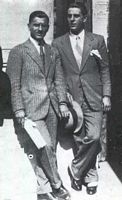 |
|
Massimo Izzi, studioso della storia della Roma, scrive che "la Roma è stata fondata in Via Forlì 16 il 7 giugno 1927. Il particolare è assolutamente incontrovertibile. Il comune di Roma aveva addirittura autorizzato la concessione di una targa commemorativa, che per l'opposizione del condominio dello stabile non è stata poi affissa". In effetti il quotidiano "Il Messaggero", già il 20 giugno del 1927 pubblicava un articolo intitolato "L'Associazione Sportiva Roma, le dichiarazioni di Italo Foschi sull'organizzazione del nuovo ente" e già il 17 luglio 1927 la Roma giocava al Motovelodromo Appio contro l'UTE (2-1 con reti di Cappa e Heger). In occasione dell'80° anniversario della Roma, l'A.S. Roma riconosceva la sua reale data di fondazione. * L'annuncio dell'8 giugno 1927: "Gli sportivi romani esulteranno certamente di legittima soddisfazione apprendendo che finalmente è stato raggiunto l'accordo fra tre delle massime associazioni calcistiche. Accordo raggiunto per quella tanto desiderata fusione di forze e di valori che dovrà dare al calcio romano un nuovo assetto ed una nuova forza vivificatrice. L'ormai avvenuta fusione delle tre società <<Alba>>, <<Fortitudo>> e <<Roman>> è quanto di più desiderabile, nell'interesse dello sport romano, potevano augurarsi le folle sportive. Al di sopra di interessi minimi di entità personale è stato posto finalmente un unico e grande interesse: quello dello sport. Di ciò va data ampia lode ai benemeriti dirigenti le tre Associazioni ed in principal modo ai presidenti comm. Italo Foschi, anima dell'auspicata fusione, on. Ulisse Igliori e avv. Vittorio Scialoja. LA RIUNIONE DI IERI SERA Ieri sera si sono riuniti i presidenti delle tre società Alba, Fortitudo e Roman nelle persone dell'on. Ulisse Igliori, del comm. Italo Foschi e dell'avv. Vittorio Scialoja, i quali riconoscendo la necessità di dotare Roma di una grande squadra di calcio, e di dare incremento a tutti gli sports atletici, hanno deciso, anche in ossequio al desiderio delle superiori gerarchie del Partito, di fondere gli Enti da loro presieduti e di costituire un nuovo organismo che prenderà il nome di Associazione Sportiva Roma. L'accordo è stato raggiunto con rapidità fascista e la fusione è ormai un fatto compiuto ed avrà inizio non appena cessati gli attuali impegni dei vari campionati in corso. La nuova squadra giuocherà , fregiata dallo scudo verde sormontato dalla lupa e dal fascio littorio. Il campo sportivo sarà quello del Motovelodromo Appio, al quale saranno apportati notevoli miglioramenti. Il nuovo Ente disporrà anche di un campo di allenamento al Testaccio".  “Il Messaggero”, (Roma), 8. VI. 1927. (pagina 2)
*
Al di là della data di fondazione, non è da escludere che il 27 luglio 1927, come ipotizzato anche per l’11 luglio, sia il giorno della firma dell’atto notarile che sancisce la nascita formale dell’Associazione Sportiva Roma. L’ipotesi nasce da una testimonianza raccolta dallo studioso Marco Impiglia nel giugno 1997 dalla voce di Nilo Iosa, uno dei più attivi organizzatori del tifo giallorosso nella storia: «Il mio più antico ricordo giallorosso risale a oltre settanta anni fa – le parole di Iosa, scomparso il 19 luglio 1999 – quando alcuni personaggi dell’epoca, che rappresentavano tre società, la Roman, la Fortitudo e l’Alba, si riunivano in un bar di Testaccio a piazza Santa Maria Liberatrice e andavano poi a piedi al vicolo del Vicario, in un palazzo della famiglia Crostarosa e oggi di proprietà Giolitti, a discutere della creazione di una grande società calcistica che rappresentasse l’Urbe. Io avevo sette anni e, insieme a due miei amici, da Testaccio dove sono nato, partivo sulla loro scia e mi appostavo sul marciapiedino sotto al palazzo dove si teneva quel singolare conclave romanista. Finalmente, al terzo giorno, i tre signori uscirono dal portone sottobraccio, tutti ridenti e divertiti, e io seppi che era stata fondata la A. S. Roma. Al ritorno a casa mi attendeva la sorella maggiore col frustino nascosto dietro la gonna e mi vergò le gambe facendomi delle bellissime righe nere, per avere marinato la scuola. Verso mezzogiorno, la mamma diede alla luce mio fratello: era il 27 luglio 1927». Non è però da escludere che l’11 luglio 1927 venga apposta la firma sull’atto notarile che sancisce la costituzione ufficiale dell’Associazione Sportiva Roma. Il giornalista Piero Di Biagio, in un articolo sulla nascita dei giallorossi pubblicato dal Messaggero il 21 dicembre 1977, oltre a citare la fondazione del 7 giugno 1927 parla dell’11 luglio come data di registrazione dell’atto notarile. Interpellato nel merito dal reparto storico della Roma nell’aprile 2015, Di Biagio ha raccontato di aver collocato la firma dell’atto notarile a quel giorno grazie a un documento che gli fu mostrato da un socio fondatore giallorosso durante un ricevimento in albergo, probabilmente a Montreal, in occasione della tournée della Roma in Nord America a fine giugno 1976. Di Biagio ha raccontato di aver spedito per posta dal Canada una copia di quel documento alla redazione del Messaggero: ad oggi però né l’originale né alcuna copia è mai stata ritrovata. (fonte: storiadellaroma.it) |
Ricercando notizie sulla prima partita internazionale della Fiorentina (21/4/27) contro il Lugano sono entrato in possesso di un "Bollettino sociale del FC Lugano" che parla, con dovizia di particolari, della loro recente tournee in Italia. Dopo aver giocato il giovedì a Firenze, la domenica successiva (il 24/4/27 allo stadio nazionale) si sono confrontati con una rappresentativa di Roma "che dovrebbe effettuare una fusione". Il risultato fu 2 - 0 per la Roma con doppietta, nel primo tempo, del centravanti Boros. 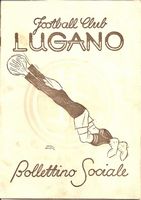  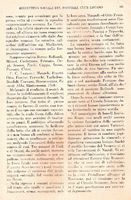  Via degli Uffici del Vicario 35 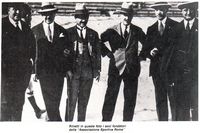 |

|
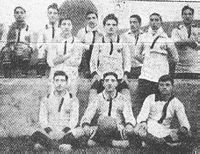 |
|
Index |
The championship |
Updates |
Pictures |
|
Premise |
Palmarès |
The second team of the region |
Away fans in Rome |
|
Unforgettable players |
The glorious ground of AS Roma |
Memorabilia |
Roma and romans |
|
A.S. Roma History |
Derby! |
AS Roma in TV and radio |
Video |
|
Lived life |
Miscellanea |
The Ultras' manifesto |
Bibliography |
|
Curva Sud history |
Matches to remember |
A.S. Roma Ultras groups |
A.S. Roma players under the Curva Sud |
|
Curva Sud chants |
Friends & enemies |
The wrong and right side of A.S. Roma fans |
Faithfuls to the tribe |
|
Suggests for the banned |
Links |
E mail me |
|